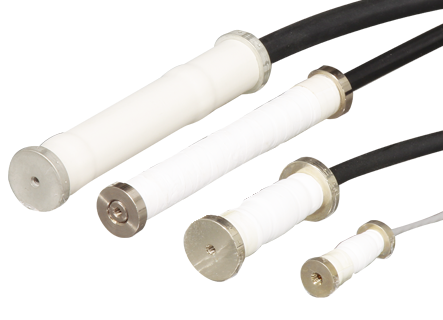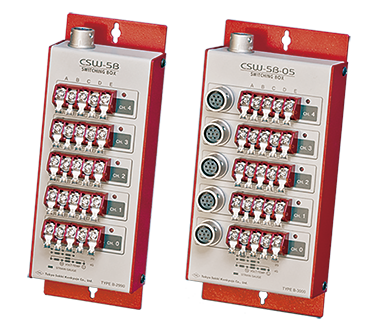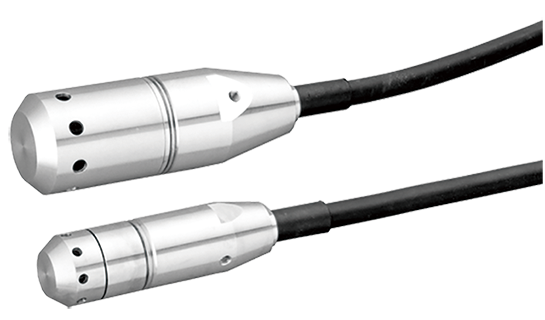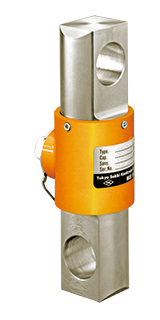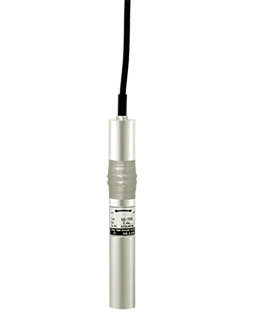Gauge Protector
Gauge protector
This rubber protector is designed to protect gauges which are bonded onto metal surface from the environment for long-term measurement. The strain gauge is packed inside together with the applied adhesive and overcoating materials. The protector is also provided with a hole for cable intake. It allows the entire area to be isolated from ambient conditions which may affect reliable measurement, and further increases the coating performance.
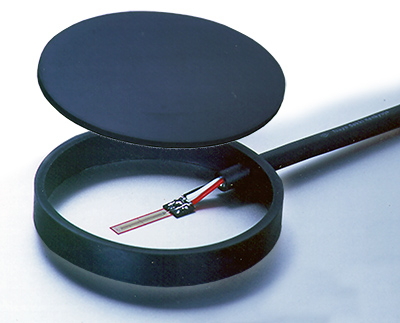
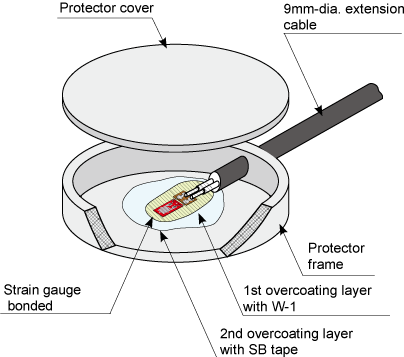
After completing the 1st and 2nd overcoating layers, epoxy resin is injected to provide mechanical protection.
|
Dimensions (mm) |
Frame Φ100 (InnerΦ92) x 15 (Height) Cover Φ100 x 3 (Thick) |
|---|---|
|
Operational temperature range (℃) |
-20 to +80 |
|
Extension cable |
Φ9mm cable recommendable |
Strain gauges with a large-size backing, such as the PFL-30-11 ane PL-60-11, cannot be used with the Gauge Protector.
More Information


